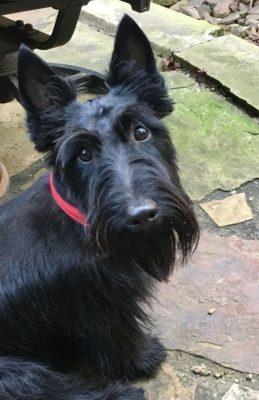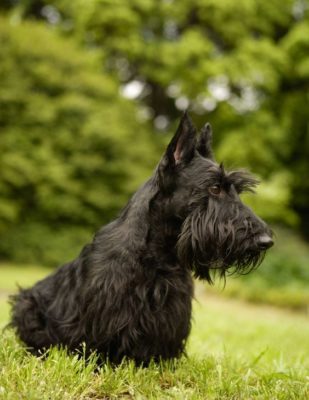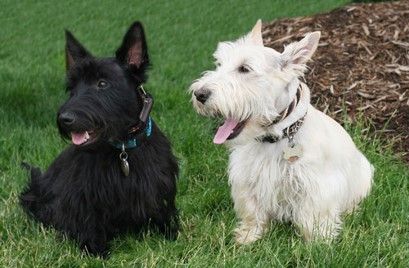Scottish Terrier
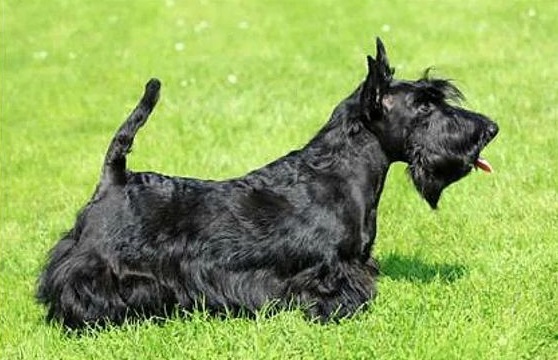
Scottish Terriers are often called the big dog in the body of the little dog. They are temperamental, independent, and sometimes easily excitable. As adults, their behavior can become capricious. Some Scotties like only one person, which is the owner. Scotties can be aggressive toward other pets and are stubborn in training.
Table of Contents
Breed Information
| Another Name | Aberdeen Terrier |
| Origin | Scotland |
| Height | Males 25-28 cm Females 20-25 cm |
| Weight | Males 8-12 kg Females 6-10 kg |
| Fur | Stiff, long |
| Color | Black, wheat yellow, tiger |
| Lifespan | 11-14 years |
| FCI Classification | Terriers |
| Group | Watchdogs, hunting dogs |
| Price | $800-1400 |
Breed Photos
Origin History
The Scottish Terrier is a venerable breed created to hunt rats, foxes, and badgers in the rocky Scottish Highlands. The animal is considered the oldest of the Highland Terriers. Breeders call the breed “the oldest variety of canine race living in Britain.” There has been controversy about its origins and type at various points in the breed’s long history. Dog breeders spent much of the 1800s arguing over who the Scottish Terrier was. Despite its humble origins from farm dogs, the dog had high-ranking friends. In the seventeenth century, King James I of England, a Scotsman by birth, was introduced to the breed and immediately fell in love with the animal.
The first importation of the Scottish Terrier arrived in America in 1883. The Scotty’s popularity peaked in the 1930s and early 40s when such famous owners as Humphrey Bogart and Bette Davis were captivated by the breed’s keen charm. The most famous Scottie in history was Fala, a constant companion of President Franklin Roosevelt during World War II.
Appearance
The Scottish Terrier is a small, compact, short-legged, sturdily-built dog with good bone and build. The terrier has a tough, wiry, weather-resistant coat. The bold, confident, and dignified appearance of the Scottish Terrier epitomizes the power in a small animal. The bright piercing eyes, standing ears, and tail convey sharp alertness, a British terriers’ hallmark.
An adult male Scottish Terrier reaches a withers of 28 cm. And the bitch – 25 cm. The dog weighs about 12 kg and bitches – 10 kg. The hard topcoat and soft, dense undercoat can be black, wheat, yellow, or tiger colored.
Character
Scottish Terriers are often called the big dog in the body of the little dog. They are temperamental, independent, and sometimes easily excitable. As adults, their behavior can become capricious. Some Scotties like only one person, which is the owner. Scotties can be aggressive toward other pets and are stubborn in training.
In one survey, the Scotty received high marks as far as children are concerned, and it may not be the best choice for families with very young children. However, dogs can get along with older children if they are treated with respect.
Unlike some other dogs, they do not require much attention from their owners. Scottish Terriers make excellent pets for those who will admire their sometimes quirky personality and provide gentle but firm handling.
Care
Scottish Terriers require regular hair care. Weekly brushing prevents Scotty’s hair from tangling and keeps the skin healthy. Also, the dog needs regular haircuts. Periodic bathing with a quality moisturizing shampoo is acceptable.
Training
Scottish Terriers do best with no more than 15 minutes of training at a time. The owner must be resourceful and not repeat the exercise. It is an intelligent dog breed, so the same actions will soon bore the Scottie. They respond well to vocal tones and understand why the owner’s voice intonation changes. The owner must be persistent and encourage good behavior.
Common Diseases
The Scottish Terrier is a fairly healthy dog. However, the animal can have these diseases:
- atopy;
- melanoma;
- cramps;
- Willebrand’s disease.
Nutrition
It is up to the dog’s owner to choose how to feed the dog – dry food or by-products. The main thing is that the dog gets the necessary amount of vitamins and minerals that the animal needs.
If a Scottish Terrier’s coat is healthy and growing evenly, there is no dry, flaky skin or irritation, and the eyes are bright, and there is no chewing or itching, then the dog is being fed the right food. Some experienced breeders have found that terriers do well on a moderate-protein diet (about 20%) with small supplements such as canned food.
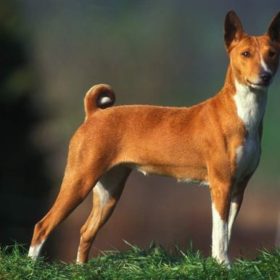 Basenji
Basenji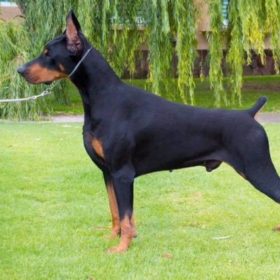 Dobermann
Dobermann Aboriginal Afghan Hound
Aboriginal Afghan Hound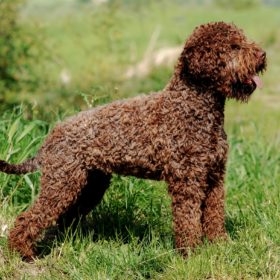 Lagotto Romagnolo
Lagotto Romagnolo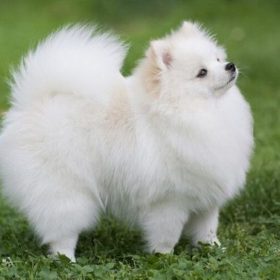 Pomeranian
Pomeranian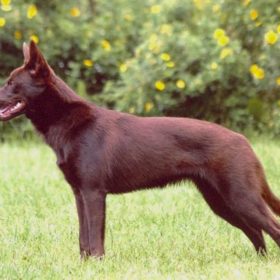 Australian Kelpie
Australian Kelpie